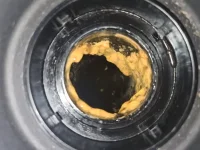Flyingdutchman
Thread starter
okay then i misunderstood your post, i thought you where hinting on deleting the exchanger because it would cool to much because that was mentioned before.So where's the "but"? That's exactly what it does, the coolant heats the oil because the oil is VERY slow to come up to temperature. Since the vehicle in question has the aforementioned device, insulating the oil filter isn't going to accomplish anything, all the heavy lifting in bringing the oil up to temp rapidly will be done by the coolant.
Yes the exchanger is one of the best inventions in terms of engine heat up/cooling.
I've had cars before that didnt have those and the oil took almost 3 times as long to reach operating temp then the water did, especialy with city drivng. On modern cars they almost rise together.


